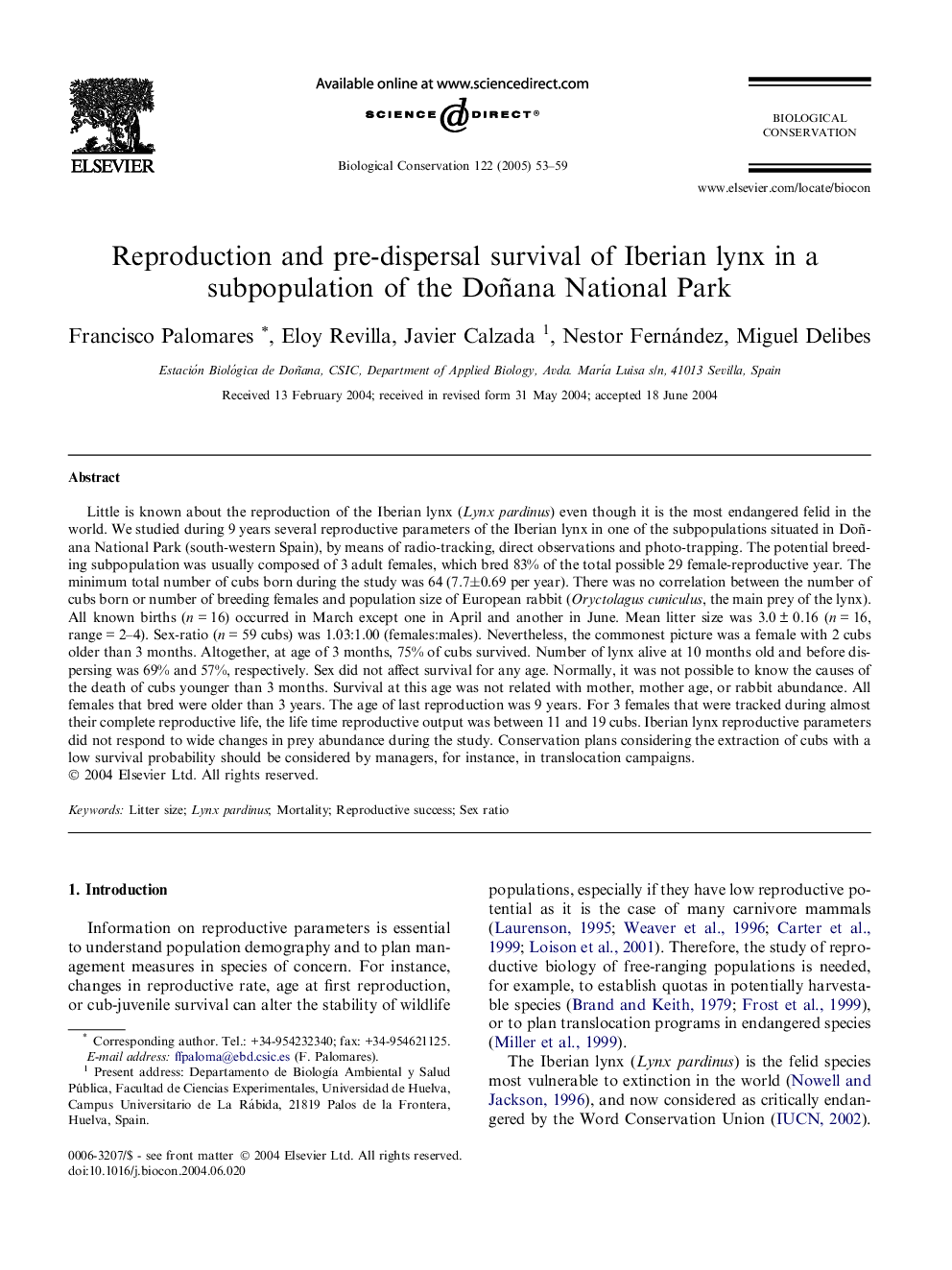| کد مقاله | کد نشریه | سال انتشار | مقاله انگلیسی | نسخه تمام متن |
|---|---|---|---|---|
| 9446267 | 1304658 | 2005 | 7 صفحه PDF | دانلود رایگان |
عنوان انگلیسی مقاله ISI
Reproduction and pre-dispersal survival of Iberian lynx in a subpopulation of the Doñana National Park
دانلود مقاله + سفارش ترجمه
دانلود مقاله ISI انگلیسی
رایگان برای ایرانیان
کلمات کلیدی
موضوعات مرتبط
علوم زیستی و بیوفناوری
علوم کشاورزی و بیولوژیک
بوم شناسی، تکامل، رفتار و سامانه شناسی
پیش نمایش صفحه اول مقاله

چکیده انگلیسی
Little is known about the reproduction of the Iberian lynx (Lynx pardinus) even though it is the most endangered felid in the world. We studied during 9 years several reproductive parameters of the Iberian lynx in one of the subpopulations situated in Doñana National Park (south-western Spain), by means of radio-tracking, direct observations and photo-trapping. The potential breeding subpopulation was usually composed of 3 adult females, which bred 83% of the total possible 29 female-reproductive year. The minimum total number of cubs born during the study was 64 (7.7 ± 0.69 per year). There was no correlation between the number of cubs born or number of breeding females and population size of European rabbit (Oryctolagus cuniculus, the main prey of the lynx). All known births (n = 16) occurred in March except one in April and another in June. Mean litter size was 3.0 ± 0.16 (n = 16, range = 2-4). Sex-ratio (n = 59 cubs) was 1.03:1.00 (females:males). Nevertheless, the commonest picture was a female with 2 cubs older than 3 months. Altogether, at age of 3 months, 75% of cubs survived. Number of lynx alive at 10 months old and before dispersing was 69% and 57%, respectively. Sex did not affect survival for any age. Normally, it was not possible to know the causes of the death of cubs younger than 3 months. Survival at this age was not related with mother, mother age, or rabbit abundance. All females that bred were older than 3 years. The age of last reproduction was 9 years. For 3 females that were tracked during almost their complete reproductive life, the life time reproductive output was between 11 and 19 cubs. Iberian lynx reproductive parameters did not respond to wide changes in prey abundance during the study. Conservation plans considering the extraction of cubs with a low survival probability should be considered by managers, for instance, in translocation campaigns.
ناشر
Database: Elsevier - ScienceDirect (ساینس دایرکت)
Journal: Biological Conservation - Volume 122, Issue 1, March 2005, Pages 53-59
Journal: Biological Conservation - Volume 122, Issue 1, March 2005, Pages 53-59
نویسندگان
Francisco Palomares, Eloy Revilla, Javier Calzada, Nestor Fernández, Miguel Delibes,